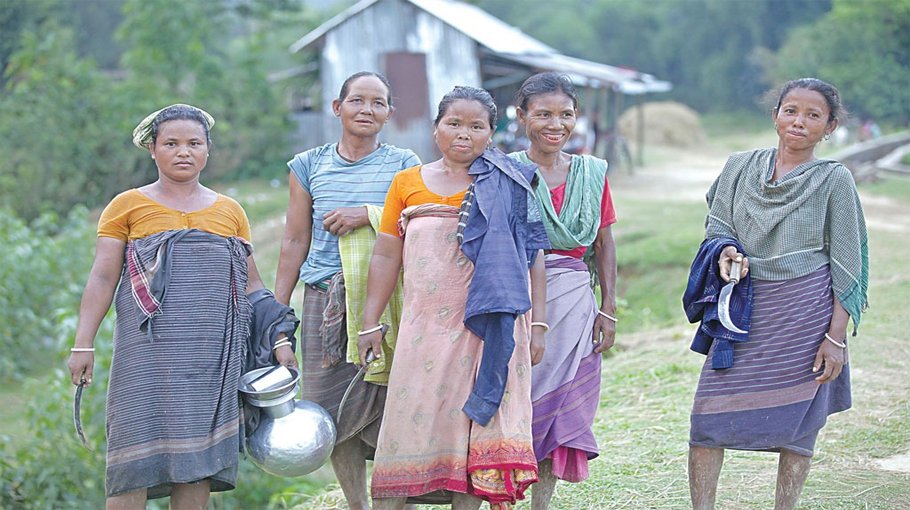Relevance of World Indigenous Day celebration in Bangladesh

(Continued from last day’s section)
The second convention was the Indigenous and Tribal Peoples Convention, 1989 (No. 169) which is a revised version of the ILO Convention 1957 (107). It was adopted on 7 June 1989. This Convention applies to the tribal people who have a distinct social, cultural and economic condition which is different from other sections of the national community and who all descended from the populations which inhabited the country, or a geographical region to which the country belongs, at the time of conquest or colonisation or the establishment of present state boundaries. This convention not only upheld the ways of life and economic development and to maintain and develop their identities, languages and religions, but it also advocated the right to exercise control over their own institutions. According to Article 6 of the Convention, the Government will have to consult the indigenous peoples, through appropriate procedures and in particular through their representative institutions, whenever consideration is being given to legislative or administrative measures which may affect them directly.
According to the Wari-Bateshwar archaeological site discovery, a well-planned settlement of the Bengalis is believed to be as old as 2,500 years old. Sultan Fakruddin Mubarak Shah annexed the Chittagong Hill Tracts in 1339 and established Muslim rule. Muslim rule continued across the Chittagong Hill Tracts till 1580 through 27 Sultans. Magh from Arakan captured the Chittagong Hill Tracts and kept them under control till 1666. Sultan Shayesta Khan restored the said captured land. On the other hand, tribals of the Chittagong Hill Tracts arrived from neighbouring Myanmar and India in 1727 onward. A major influx of the tribal people into the Chittagong Hill Tracts also took place in 1785 when Burma King Bodawpaya annexed Arakan. Bomang Raja Aung Sho Pru during one of his interviews said that they are not the original inhabitant of Chittagong Hill Tracts. They have been residing here for the last three hundred years. So as per the definition of ILO there are no indigenous people in Bangladesh. And for obvious reasons, the government of Bangladesh did not ratify the convention.
Only 20 countries of the world have ratified the convention and Nepal is the only country from Asia. But, the Bangladesh government always believes in the equal rights of every citizen and so as to tribal people and other marginal populations. Government brought in the fifteenth amendment to the constitution which says, “The state shall take steps to protect and develop the unique local culture and tradition of the tribes, minor races, ethnic sects, communities”.
The United Nations General Assembly adopted the Declaration on the Rights of Indigenous Peoples (UNDRIP) on 13 September 2007. It was adopted with 144 votes in favour, 11 abstentions (Azerbaijan, Bangladesh, Bhutan, Burundi, Colombia, Georgia, Kenya, Nigeria, Russian Federation, Samoa and Ukraine) and four States against (Australia, Canada, New Zealand and the United States of America). The Declaration is the instrument detailing minimum standards for the recognition, protection and promotion of the rights of indigenous peoples in consonance with international law and policy. It addresses both individual and collective rights; cultural rights and identity; rights to education, health, employment, language, and others. It also ensures their right to remain distinct and to pursue their own priorities in economic, social and cultural development. The declaration is the instrument in exercising the right of the Indigenous peoples for self-determination, autonomy or self-government in matters relating to their internal and local affairs as well as ways and means for financing their autonomous functions. Indigenous peoples have the right to maintain and strengthen their distinct political, legal, economic, social and cultural institutions.
The Bangladesh Government explicitly clarified our stance on indigenous issues in UN forums. The tribal and other minority people living in different parts of the country are not indigenous people. But, they will have an equal right to practice their rituals, cultures and practices like all other citizens of the country. The Indian constitution also doesn’t recognise the existence of indigenous people in India. Rather they recognised the ethnic minorities as Scheduled Caste (like Bagdi, Bhuimali, Bhunar, Chamar, Muchi etc.) and Scheduled Tribes (like Chakma, Tipra, Kuki, Garo, Mizo, Hajong, Santal etc.). World observes International Day of the World's Indigenous Peoples (not Indigenous and Tribal Peoples) on 9 August 2023. Bangladesh doesn’t have indigenous people in its territory as strongly reiterated by the government. So, on 9 August 2023 whom are we highlighting? Whose rights are we propagating? Is it for the indigenous people living in different countries of the world, like Sámi of Norway, Sweden, Finland and Russia or First Nations, Inuit, Métis of Canada or Pama-Nyungan of Australia?
(Concluded)



